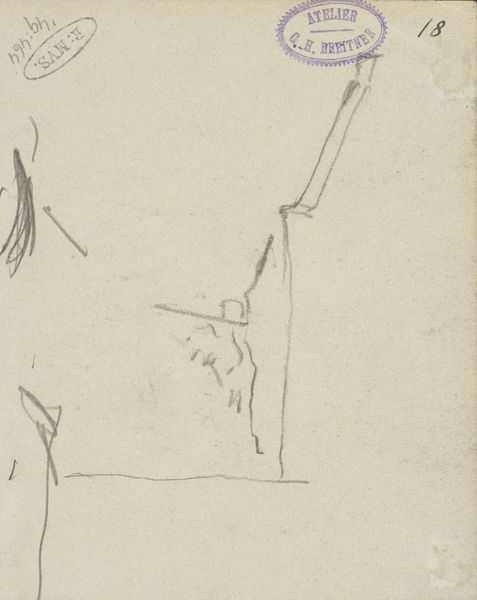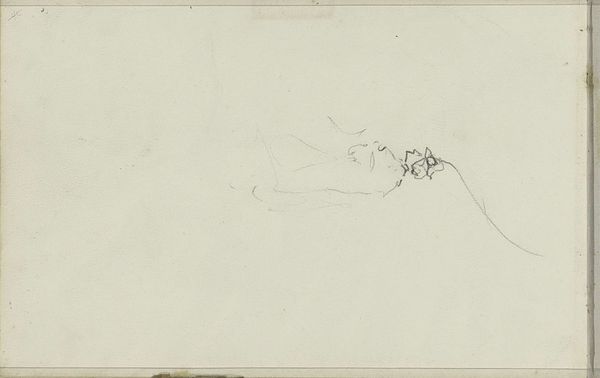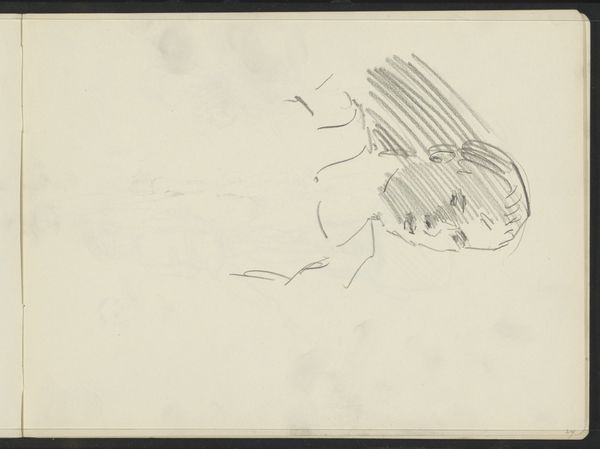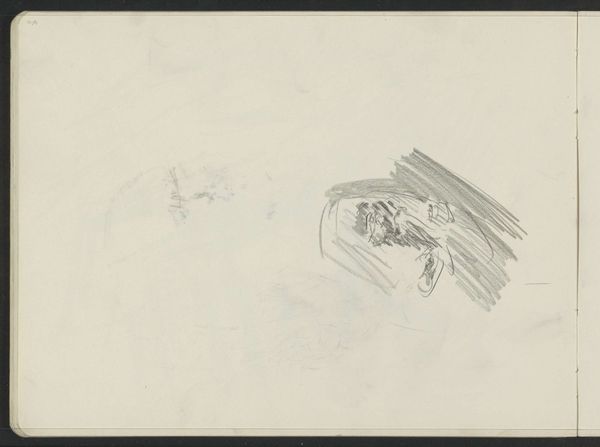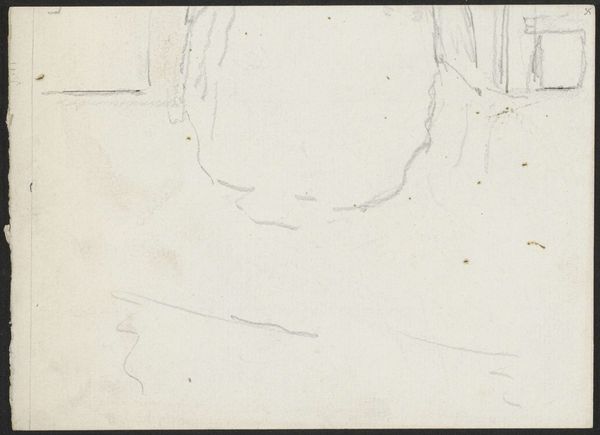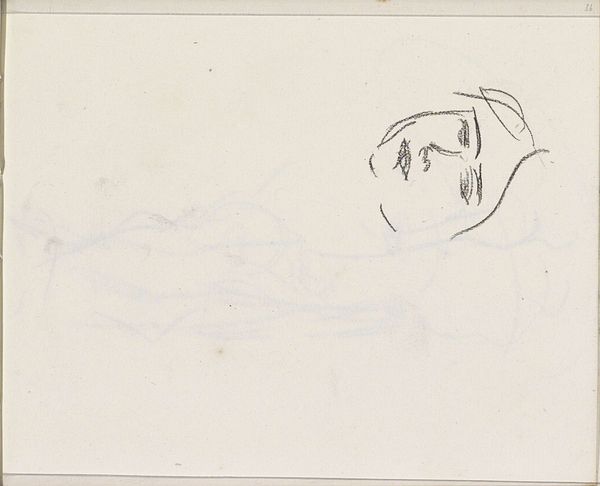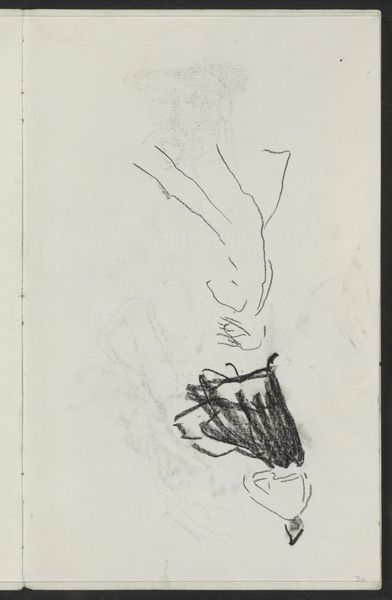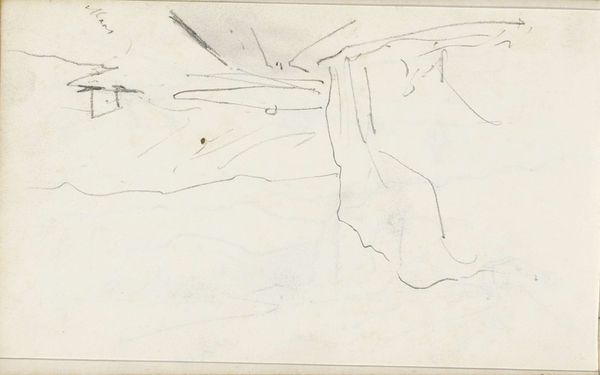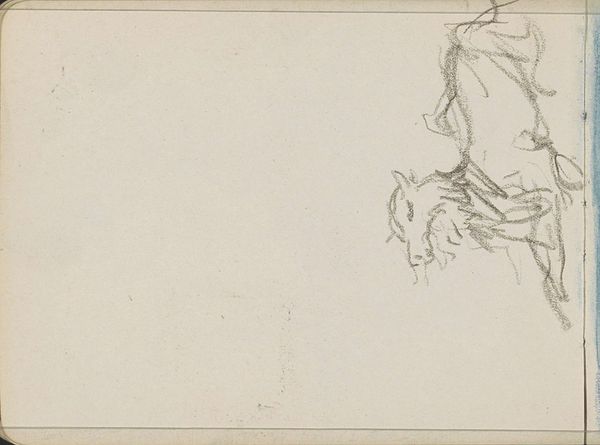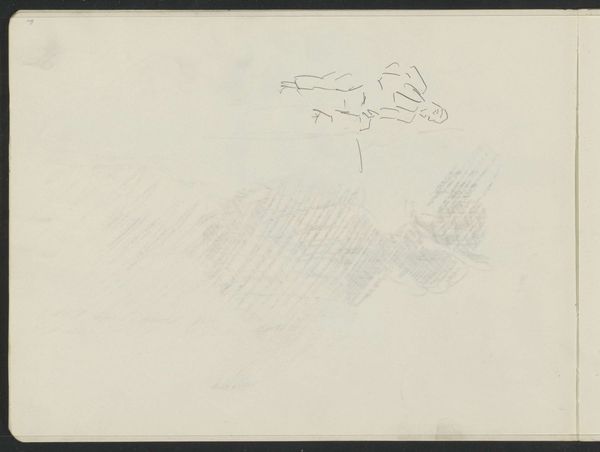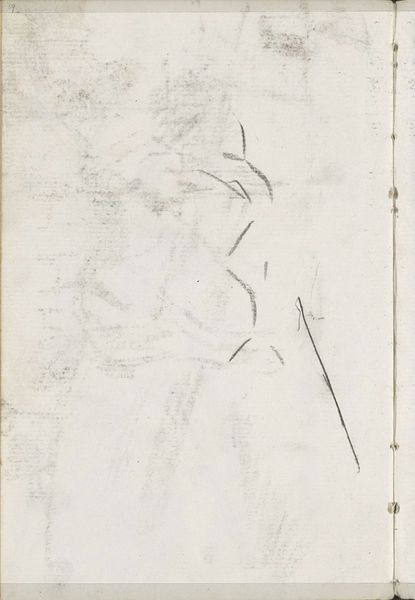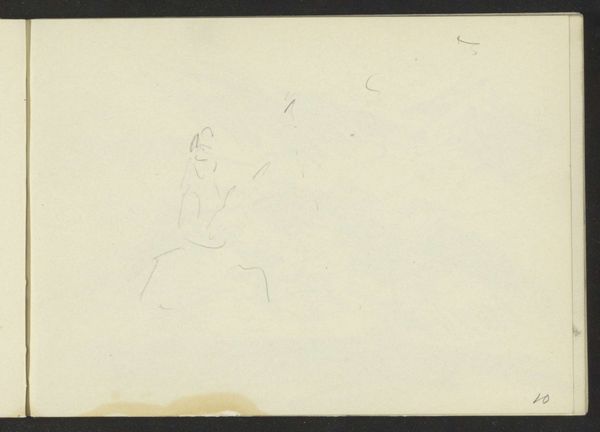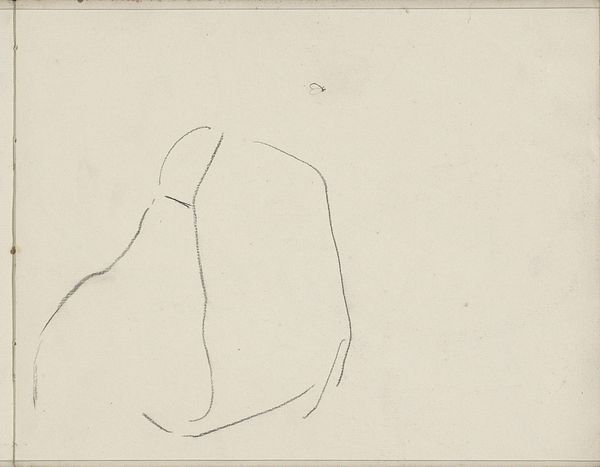
drawing, pencil, graphite
#
drawing
#
animal
#
landscape
#
figuration
#
pencil
#
horse
#
graphite
#
sketchbook drawing
Dimensions: height 137 mm, width 201 mm
Copyright: Rijks Museum: Open Domain
Curator: Well, hello there! Looking at this drawing, it feels rather...fragmentary. The quick strokes, the limited view... it has a peculiar energy. Editor: Indeed. We're observing "Achterste van een lopend paard", or "Hindquarters of a Running Horse," by Leo Gestel, thought to have been created sometime between 1891 and 1941. It is currently held here at the Rijksmuseum. The materials used were graphite and pencil on paper. I'm intrigued by the choice to depict only a section of the animal, especially its hindquarters, it focuses attention so acutely. Curator: It absolutely forces a reading. The horse, traditionally a symbol of power, nobility, even sexuality. But here, only the back end... It’s as though Gestel is deliberately truncating that symbolism, making it...almost comical, wouldn't you agree? The materials—the humble pencil and paper—speak to the ready availability, this was probably done on the move, a quick sketch capturing an immediate impression, and challenging high art boundaries. Editor: Comical, perhaps unintentionally so! I lean more toward an intimate moment, a glance capturing movement and musculature. Horses are central to transportation and agriculture and Gestel understands that connection deeply, stripping away layers of romanticism. His work frequently featured animals, but it always carried potent associations, almost archetypal in nature. There's a rawness to the medium as well. The pencil sketch allows Gestel to lay bare the horse, expose its animalistic presence and function within the economic context of the region and time. Curator: I find it difficult to move beyond the incomplete nature. I mean, we aren't seeing the head, and as a result the symbolism becomes so… open. Gestel clearly focused on the animal’s raw, muscular strength, reducing it to functional, elemental forms. The labor involved with sketching quickly is present and part of the artistic process; how Gestel rapidly and concisely communicates the subject is part of its appeal and process-oriented. It makes me consider how his work connects with larger questions about animal labor. Editor: It’s a fascinating distillation, and by focusing on only part of the whole Gestel invites contemplation, not just about the horse itself, but also the nature of its purpose in relation to its surroundings. We've had a rather good look ourselves, haven't we? Curator: I agree; by exploring both its materials and subject matter, its role in challenging conventions and engaging with broader themes, we see that there is a certain profoundness.
Comments
No comments
Be the first to comment and join the conversation on the ultimate creative platform.
